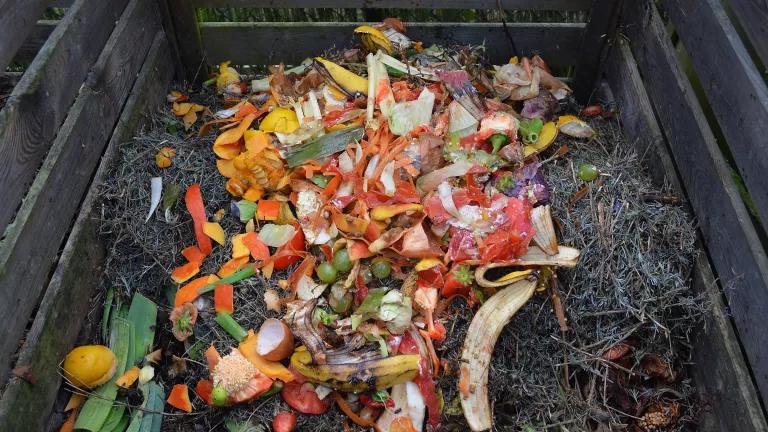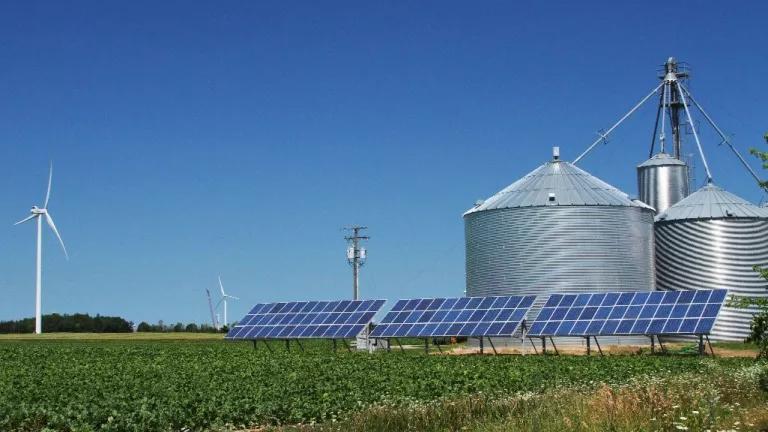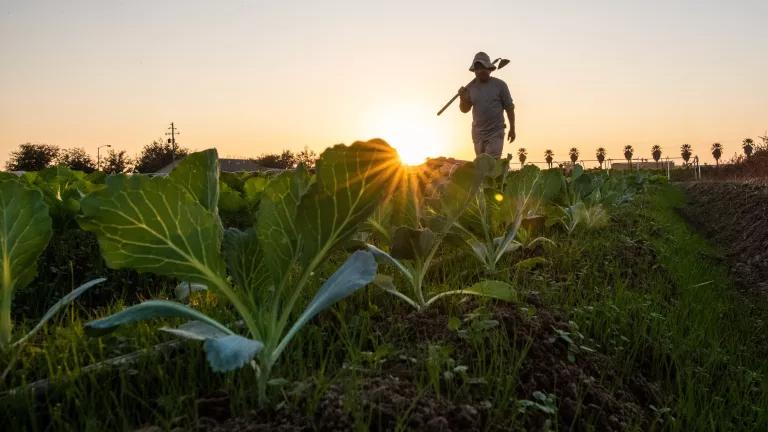Conservation Helps Farms Survive—and Thrive—in Drought
The impacts of healthy soil on drought resilience are well-documented and the need for widespread soil health restoration is urgent.
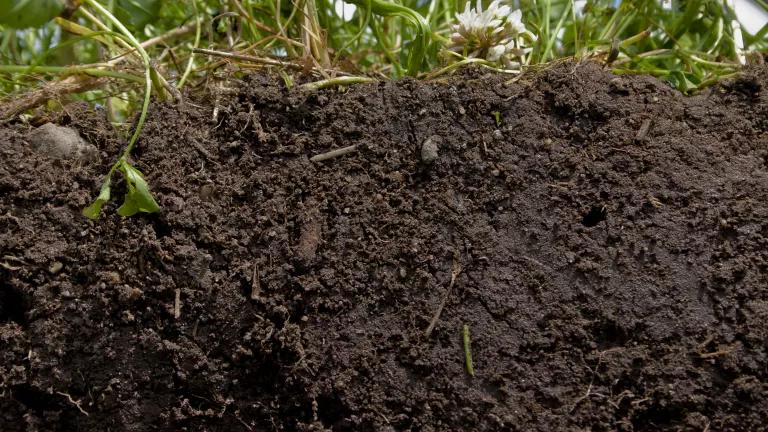
Cross Section of Healthy Soil in Field of Cover Crops
Healthy soil is a potent tool to combat the impacts of drought on farms and ranches. By using conservation practices that build healthy soil—like cover cropping, conservation tillage, and compost—growers increase the natural water storage potential of their land. Healthy soil captures more water when it rains and holds onto that water for future crop use, allowing farms with healthy soil to deliver stable yields, even in drought years. Longstanding, but underfunded, federal agricultural conservation programs like EQIP, CSP, RCPP, and ACEP help producers use practices that improve soil health and drought resilience—while also limiting their climate footprints and protecting people and natural resources.
Healthy soil acts like a sponge: When rain falls on a field with healthy soil, water can infiltrate instead of puddling and running off, which is what happens on fields with compacted, unhealthy soil. A 1% increase in soil organic matter (an indicator of soil health) increases water storage potential on an acre by more than 20,000 gallons.
There are two key principles behind soil’s ability to help farmers and ranchers be more drought resilient. As Dr. Michelle Wander, Professor of Natural Resources and Environmental Sciences at the University of Illinois says, "We need to find a way to slow the water down, trap it at the surface and give it time to infiltrate.” How do conservation-minded growers do this?
First, keeping roots in the ground improves water infiltration. When crops bury their roots into soil, they create little pockets and pathways for water to seep into. Practices like cover cropping, planting perennial crops, and growing crops with deep root systems keep plant roots in the soil which helps improve water infiltration.
Second, soil porosity can improve water retention. Porous soil is soil that has an interconnected network of pockets and pathways that can store water (the same ones created by the root systems described above). When soil loses its porosity and becomes compacted, it loses the space where water can be stored for future crop use. Losing this space also means water can’t be transported through the soil system, which means losing that water (and topsoil) to runoff, which contributes to pollution of downstream water supplies. Practices like conservation tillage, cover cropping, applying compost, and integrating livestock into crop rotations also help improve soil structure and porosity and protect soil’s ability to hold onto water for future plant use.
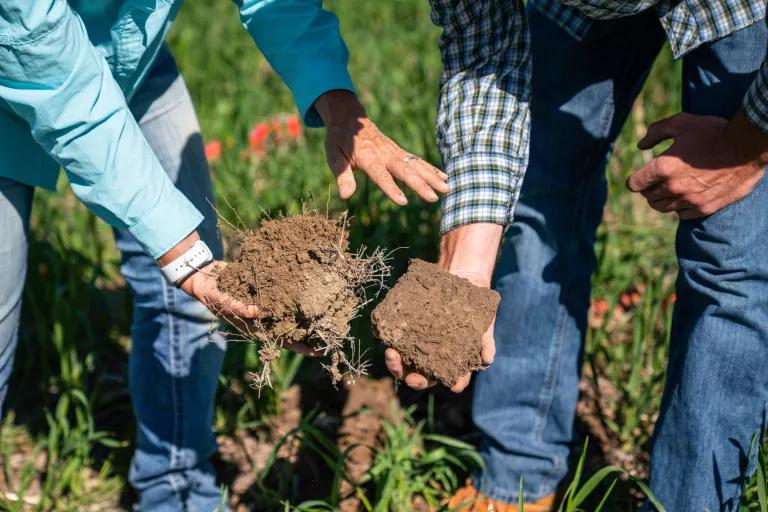
Showing samples of healthy soil incorporating deep rooting cover crops (left) and unhealthy compacted soil (right) at Linker Farms in Judith Basin County, Montana, in June 2020.
By improving the water infiltration and water retention capacities of their soils—essentially improving their land’s natural reservoirs—farmers and ranchers can reduce their need for surface water deliveries while protecting their yields. This is how farmers and ranchers who use conservation practices like the ones already listed can become more water independent and drought resilient. For example, forty years of side-by-side trials at the Rodale Institute have found that in drought years, organic farming systems—which include numerous practices that build healthy soil—can produce yields up to 40% higher than farms not managed organically. The Rodale trials have also found that 15-20% more water percolates the soil in organic systems—and the difference comes down to improvements in soil health.
The impacts of healthy soil on drought resilience are well-documented and the need for widespread soil health restoration is urgent. The American Farm Bureau Federation estimated that in 2021, 20 weather and climate disasters across the country caused $12.5 billion in crop and rangeland losses.
Constructing new dams and building new reservoirs won’t make more rain fall from the sky. But reducing irrigation demand by investing in healthy soil practices will help stabilize farms facing droughts, while also preparing them—and our food system—for a future with less water.



